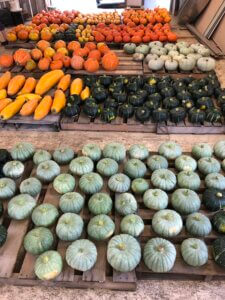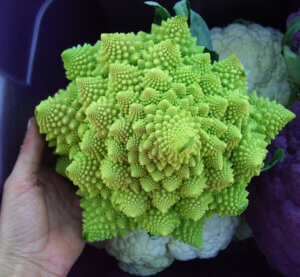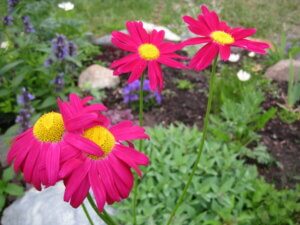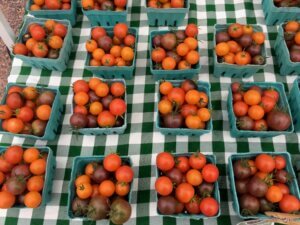By Heidi Rader, Professor of Extension at the University of Alaska Fairbanks
 It’s not hard to dream about what you will plant in your garden when the seed catalogs start arriving or you go to the greenhouse and see the luscious vegetables and gorgeous flowers. But an overcrowded garden will be less bounteous and beautiful than a thoughtfully planned garden with adequately spaced plants.
It’s not hard to dream about what you will plant in your garden when the seed catalogs start arriving or you go to the greenhouse and see the luscious vegetables and gorgeous flowers. But an overcrowded garden will be less bounteous and beautiful than a thoughtfully planned garden with adequately spaced plants.
When choosing what to grow, try to find relevant information that is local, unbiased, and not profit-driven. Seed companies and catalogs are a great source of information, but they may not have done trials in Alaska, and they are also selling a product. When buying seeds, look for varieties that are identified as being adapted to short, cool growing seasons.
If you’re a new gardener, you’ll be doing a fair bit of experimentation in your first few years. What grows well in your space? What do you like to eat? What flowers do you find beautiful? What is easy to grow?
As you gain experience, you will learn from that and use it to better plan your garden the following year. This is the time to pull out your garden journal from last year (you kept one, right?). Unless your memory is better than average, your best bet is to keep a garden journal so that you can actually recall:
- What you planted (crop and variety);
- When you planted it;
- How well it did (even consider recording harvest dates and amounts);
- Where you planted it so that you can rotate crops. Last summer, I kept a bit of a time-lapse photo journal with accompanying comments. I had fantastic luck with Marketmore and Diva cucumbers in the ground and an English cucumber in a pot and will probably grow those again.
 At some point, you should aim to experiment in only about 10% of your garden. This keeps gardening fun but also allows you to benefit from your experience and grow those tried-and-true varieties. Ben Hartman suggested this in The Lean Farm.
At some point, you should aim to experiment in only about 10% of your garden. This keeps gardening fun but also allows you to benefit from your experience and grow those tried-and-true varieties. Ben Hartman suggested this in The Lean Farm.
The USDA Plant Hardiness Zone Map shows that Alaska is warming as does the Alaska Garden Helper. In addition, it forecasts longer growing seasons. Unfortunately, this comes with more storms, extreme temperature swings, and overall unpredictability. Your growing zone is a good consideration, particularly for perennials. Other factors are more important for summer growing including days to maturity and likeliness to bolt.
Although we had a cold snap in Fairbanks this winter, I’m excited to try more perennial vegetable crops like skirret, which is akin to carrots. I’d also like to grow stinging nettle. One species, Urtica dioica, is native in Southcentral and Southeast Alaska. It could be a bit weedy, so I’ll grow it in an area that won’t take over my garden. I’m hoping I won’t accidentally transfer it to my main garden, and end up weeding it.
I’d also like to try some new raspberry varieties, Prelude, Nova, and Encore, which may or may not thrive or survive temperatures below minus 30 – 40°F.
 At the 2023 Alaska Farm and Food Festival, Heidi Peroni, sales representative with Johnny’s Select Seeds had a few suggestions for vegetables with the fewest days to maturity to grow this summer:
At the 2023 Alaska Farm and Food Festival, Heidi Peroni, sales representative with Johnny’s Select Seeds had a few suggestions for vegetables with the fewest days to maturity to grow this summer:
- Bolt XR (F1) sweet corn, 67 days
- Purple Moon (F1) purple cauliflower, 62 days
- Caravel carrots, 58 days
- Purple Star carrots, 68 days
- Honey Bun (F1) winter squash, 95 days
- Honey Bear (F1) winter squash, 85 days
At the same conference, Glenna Gannon, with the University of Alaska Fairbanks, talked about the vegetable variety trials. In Fairbanks trials from 2017 to 2022, nine different types of beet varieties were planted. Zeppo, Robin, and Subeto yielded significantly higher than the other varieties. From 2018 to 2022, Sugar Pearl, Espresso, Temptress, Cafe, Sugar Buns, and Ruby Queen were the top-yielding sweet corn varieties out of 24 varieties tested. Hot peppers, melons, artichokes, garlic, leeks, and winter squash are also being evaluated in unreplicated trials. You can see past vegetable variety trials here.
I’ve always loved the look and taste of purple vegetables, and they are rich in antioxidants. I’m also excited to try some winter squash varieties. They do well in the heat and have the added benefit of keeping for months on the counter. Winter squash is an excellent crop to try.
 I teach Growing a Productive, Sustainable Garden in Alaska for 3 UAF credits in the spring and am inspired by the varieties that students plan to try or have had success with, such as black kale and black cherry tomatoes.
I teach Growing a Productive, Sustainable Garden in Alaska for 3 UAF credits in the spring and am inspired by the varieties that students plan to try or have had success with, such as black kale and black cherry tomatoes.
This summer, I plan to grow some eye-popping flower varieties including Monaco Orange snapdragons, SunFill purple sunflowers, Sunday Mix celosia, and Purple Persian ranunculus. Here’s a helpful article about growing ranunculus in Anchorage. For flower inspiration check out Proven Winners.
If you’ve never ever gardened in Alaska before, then check out this blog post and video.
What are you excited to grow this summer? What have you found grew well for you in the last couple of summers? You can share your comments on my blog, https://itgrowsinalaska.community.uaf.edu/ and find more ideas for what to grow in your garden this summer.
Questions about gardening or the Tribes Extension Program? Visit www.uaf.edu/ces/tribes Contact Heidi at hbrader@alaska.edu or 907-474-6620. For more articles like this, go to: https://itgrowsinalaska.community.uaf.edu/
Heidi Rader is a professor of Extension and Project director for the Alaska Tribes Extension Project. This work is supported by the Federally Recognized Tribes Extension Program Project 2022-41580-37957. It is a partnership with Tanana Chiefs Conference. Any opinions, findings, conclusions, or recommendations expressed in this publication are those of the author(s) and do not necessarily reflect the view of the U.S. Department of Agriculture.
UA is an AA/EO employer and educational institution and prohibits illegal discrimination against any individual: www.alaska.edu/nondiscrimination.
